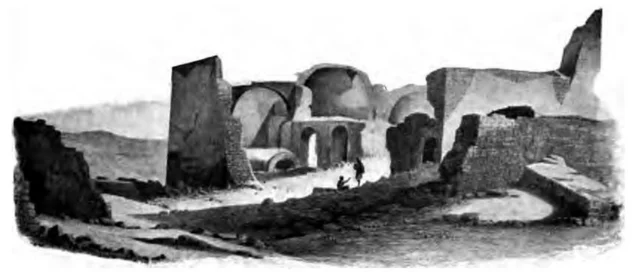The Monastery in Ghazali, a significant site in Sudan, dates back to the early Christian period in Nubia. Located in the Wadi Abu Dom, about 12 miles northeast of the ancient city of Meroë, this monastery provides valuable insight into Nubian Christianity and early monastic life in the region. Archaeological work at the site has helped researchers understand both the architectural and religious practices that flourished in medieval Nubia.
Get your dose of History via Email
Historical Context

Christianity reached Nubia in the 6th century AD, spreading south from Egypt. The region became a center of Christian culture, especially from AD 580 to AD 1400. The Monastery in Ghazali was built within this timeframe, likely established during the 7th century AD. This was a period of significant Nubian resistance to both Islamic expansion and control from Egypt. The Christian monasteries across Nubia played essential roles as centers for religion, learning, and social organization. Ghazali’s location along a major trade route made it a hub for interaction, contributing to its prominence.
Architecture of Ghazali
The Ghazali monastery is structured as a typical monastic complex of the time. The complex includes several key features:
- Church: At the heart of the monastery stands a church, divided into a nave and two aisles. This structure shows similarities to other early Christian churches in Nubia, with simple designs reflecting the practical needs of monastic life.
- Living Quarters: The monks resided in cells around the central church. These cells were designed for both solitude and communal living, meeting the monastic standards for isolation and simplicity.
- Storage and Workshops: Archaeological excavations have uncovered storage areas and possible workshops. These would have supported self-sufficiency, providing space for food storage, tool repair, and other daily needs.
The construction style of Ghazali uses local sandstone, which was common in Nubian architecture. Additionally, walls were plastered and often decorated, though any remaining decoration is faint due to weathering and time.
Religious and Cultural Significance
The Monastery in Ghazali reflects the integration of Christianity with Nubian traditions. The monks likely followed monastic rules influenced by both Egyptian Coptic Christianity and local customs. Ghazali served as a religious center for worship, prayer, and learning, particularly for people living in remote regions. Monasteries like Ghazali also attracted local Nubians, possibly acting as pilgrimage sites and religious schools.
Ghazali’s significance extends beyond its role as a religious center. As a part of the Nubian Christian kingdom, it symbolized resistance to Islamic control. By fostering a distinctly Nubian form of Christianity, Ghazali and similar monasteries contributed to preserving regional identity.
Archaeological Discoveries
Excavations at Ghazali have revealed important artifacts, including pottery, crosses, and inscriptions. These artifacts provide a glimpse into daily life at the monastery. For instance:
- Pottery: Pottery fragments indicate local production, showing trade links between Ghazali and nearby communities.
- Inscriptions and Crosses: Carved crosses and inscriptions point to the importance of the Christian faith. The inscriptions are typically in Greek and Coptic, languages used by early Nubian Christians.
Archaeologists have also found evidence of food storage and production. Seeds, bones, and other organic remains suggest that the monastery relied on local agriculture and animal husbandry. This self-sufficiency was crucial for a remote monastic community.
Decline and Abandonment
The decline of Christianity in Nubia began around the 14th century AD, primarily due to Islamic influence in the region. As Islam spread, many Nubian Christian sites faced abandonment or destruction. Ghazali likely declined during this period, and the monks may have relocated to more protected areas. By the 15th century, the monastery lay in ruins.
Despite this, the Monastery in Ghazali remains a valuable source for historians and archaeologists. Its remains allow scholars to study Nubian Christianity’s architectural and cultural adaptations, offering insight into a unique chapter of African religious history.
Conclusion
The Monastery in Ghazali stands as a testament to the strength and resilience of Nubian Christianity. Its strategic location, architectural simplicity, and preserved artifacts provide insight into a time when Christianity was central to Nubian identity. The ongoing archaeological efforts at Ghazali ensure that its legacy remains accessible, deepening our understanding of Nubian Christian history and monastic life in medieval Africa.
Source:

